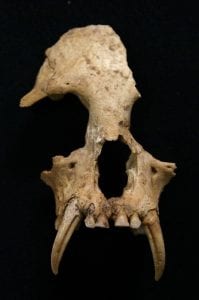The Imperial Gentleman of China
By Carolyn Thompson, on 3 July 2018
I am a primatologist; that is, a scientist who studies the behaviour, abundance and conservation status of monkeys, lemurs and apes. My specialty area and the focus of my PhD research here at University College London, is the plight of the gibbons, the smallest of the apes.

The Skywalker Hoolock gibbon (Hoolock tianxing). Photograph taken on Carolyn Thompson’s recent field trip to China. (Photo credit: Carolyn Thompson)
Gibbons are often forgotten in the shadow of their great cousins — the orangutans, chimpanzees, bonobos and gorillas — receiving less funding, as well as research and media attention. This is very unfortunate seeing as 19 of the 20 species are on the brink of extinction. The Hainan gibbon, for example, is the world’s rarest primate with a mere 26 individuals making up their entire global population.
I am always thrilled therefore to see media articles raising some much needed gibbon awareness, even if the news story doesn’t always paint us humans in the best light.
In 2004, one of my supervisors from the Zoological Society of London, stumbled across a gibbon skull inside a tomb in Xi’an, Shaanxi Province, China. The skull is believed to be ca. 2,200-2,300 years old and the potential property of Lady Xia, the grandmother of China’s first emperor, Qin Shihuang, who is famous for his striking terracotta army. Inside this ancient tomb was a whole menagerie of other animal skeletons including a crane, bear and a leopard — yet another example of human-animal relationships that have dated back millennia.
Although this exciting discovery could tell us a lot about our evolutionary shared ancestry with gibbon species, there are still many unanswered questions. We are unsure if the skull, now said to belong to Junzi imperalis (meaning the ‘imperial man of virtue’ due to the strong historical relationship between humans and gibbons in Chinese culture) is in fact a new species and where it came from. There are strong indicators, however, suggesting that this potentially new species of gibbon could be the first ape to have vanished off the face of the earth due to human pressures. Now extinct, we need to look at our current impact on the planet to ensure we don’t do the same with our other cousins.
Part of my PhD research examines the relationship between humans and animals, especially amongst local communities found in gibbon habitat regions. This intrigue, along with my love of mingling with the public, led me to my new role as a Student Engager in the UCL museums. For example, the Ancient Egyptians also had a strong connection with animals which I hope to explore over the coming months in the UCL Petrie Museum, and the Grant Museum of Zoology also has a couple of gibbon skeletons hanging around. Come and see for yourself!
In the meantime, keep your eyes peeled for my upcoming blogs on Twitter: @gibbonresearch and @ResearchEngager
 Close
Close


